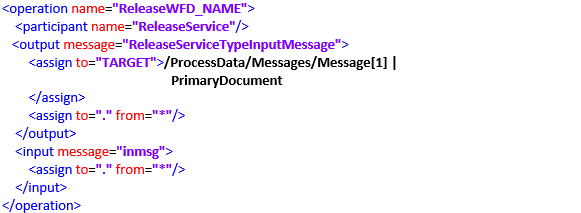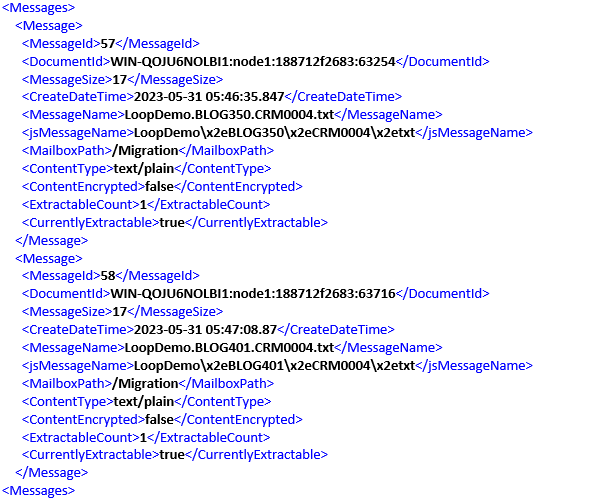Coliance NEWSLETTER
September 2023 | Issue 7

01
The Power of Chat GPT and NLP: Revolutionising Language Technology and Beyond
Chat GPT, developed by OpenAI, is an advanced language model based on natural language processing (NLP) and machine learning. This powerful tool can generate text that resembles human language and is capable of understanding, analysing, and responding to input text.
02
Streamlined Compliance and Cost Savings: Unleash the Full Potential of Your IBM Licences with Coliance's Managed ILMT Service
In the dynamic landscape of modern business with its diverse product portfolio, keeping track of IBM software usage can be overwhelming. Navigating the complexities of software licences, especially IBM's specific licencing metrics and requirements, adds further challenges.
03
"Unveiling the Menace: Runaway Processes and the Looping Threat to IBM B2Bi"
Imagine a scenario where a single program goes rogue, devouring system resources like a voracious beast. It engulfs CPU time, gobbles up memory, engenders disk I/O chaos, and overwhelms network bandwidth, leaving your system gasping for breath. This insatiable consumption can lead to unresponsiveness or even crashes, resulting in significant performance issues and rendering the system unusable.
CHAT GPT HAS GAINED WIDESPREAD ATTENTION FOR ITS ABILITY TO PROCESS AND PRODUCE NATURAL LANGUAGE, MAKING IT A REMARKABLE ADVANCEMENT IN THE FIELD OF AI AND LANGUAGE TECHNOLOGY.
Currently, Chat GPT offers a free version that is remarkably powerful! This fantastic tool combines linguistics and computer science through natural language processing (NLP), enabling machines to understand, analyse, and make sense of text and speech.
“In our 20-year history, we have designed and developed a number of services and solutions that make our customer’s lives easier and more profitable”
Ian Wells – Chairman and co-founder of Coliance
Reaping the Benefits: How can NLP give your Business a Real Boost
Dive into Big Data: NLP wields the superpower of analysing vast amounts of unstructured text data, encompassing social media comments, customer support tickets, reviews, and news reports. Through automated processing, NLP saves you precious time and effort while extracting valuable insights from this sea of information. It’s like having an intelligent assistant that effortlessly unlocks the hidden potential within your data!
Automation Made Easy: Bid farewell to the burden of tedious manual tasks! NLP’s sophisticated tools streamline information sorting and routing, transforming your operations with speed, efficiency, and accuracy. By automating these processes, NLP liberates your valuable time, allowing you to concentrate on what truly matters, driving innovation, and achieving your business goals with ease.
Tailored Solutions: Chat GPT offers tailor-made solutions with its versatile NLP algorithms, which can be easily customised to accommodate diverse industry-specific jargon and language peculiarities. These algorithms go beyond mere understanding and can even decode sarcasm and wordplay, ensuring that your applications grasp the subtle nuances of language, making interactions feel incredibly natural. With Chat GPT, getting things just right for your specific needs becomes a seamless reality!
Decoding the Magic of NLP: How did a machine learn to speak our language?
NLP draws its inspiration from the captivating world of linguistics and embarks on a four-step journey to understand and interpret human language.
Morphology: At the first step, NLP delves into morphology, the study of word formation and the intricate relationships between words. It carefully examines prefixes, suffixes, and roots to grasp how words are constructed and related.
Syntax: Next on the journey is syntax, the art of word order and how words come together to form grammatically correct sentences. Consider it the “grammar police” ensuring that every sentence makes sense and follows the rules of language.
Semantics: The real adventure begins with semantics! At this stage, NLP explores the meaning of words and how they play out within the context of grammar and vocabulary. It delves into the deeper layers of understanding, capturing the essence of word meanings.
Pragmatics: Lastly, pragmatics takes language comprehension to a whole new level. It considers the meaning of words in real-life situations, considering social cues, cultural influences, and the intentions behind the words. This step involves understanding the unwritten rules of language and grasping the subtleties of communication.
Through this comprehensive journey, NLP-equipped machines become language superheroes, gaining a profound understanding of text and performing remarkable tasks like information extraction, language translation, text summarisation, and question-answering. NLP allows machines to bridge the gap between human language and artificial intelligence, revolutionising the way we interact with technology.
Harnessing the Power of NLP: Can NLP’s Capabilities Make a Tangible Impact in Real Life?
Unveiling Insights from Big Data: NLP acts as a powerful tool for businesses, providing valuable insights from massive volumes of unstructured text data. Through sentiment analysis, customer feedback processing, and personalised shopping experiences for retailers, NLP empowers companies to make data-driven decisions with precision and efficiency.
Streamlining Automation: In the realm of healthcare, NLP-powered chatbots have played a vital role in enhancing patient care and advancing medical research. These chatbots offer faster response times, ensuring seamless interactions with patients, and contribute to higher customer satisfaction levels, making healthcare services more accessible and responsive to individual needs.
Exploring the Reality of Chat GPT: What are its Advantages and Limitations?
Overcoming Challenges: NLP has come a long way, but it still faces challenges in understanding context, idioms, and cultural nuances. Fortunately, ongoing research and advancements in machine learning are steadily improving NLP’s capabilities, making it more adept at handling complex language interactions.
Future Developments: The future of NLP is incredibly exciting! Researchers are exploring new frontiers in sentiment analysis, language translation, and emotion recognition. With continuous developments, NLP is poised to transform various industries, paving the way for smarter and more interactive technology.
Ethical Considerations: As NLP becomes more pervasive, ethical considerations become paramount. Ensuring unbiased, fair, and inclusive language processing is essential. Developers and businesses must be conscious of avoiding harmful biases and maintaining transparency in NLP systems’ development and deployment.
User Interaction and Adaptability: One of NLP’s greatest strengths is its user-friendly nature. It opens up possibilities for people from different backgrounds and professions to utilise its potential. Businesses can seamlessly integrate NLP into their existing systems, making it easy to adopt and adapt.
- Continuous Performance Monitoring: Regularly monitor the performance of Chat GPT to identify any areas for improvement. Continuous feedback and adjustments ensure the system stays up-to-date and reliable.
- Community and Collaboration: Engage with the vibrant NLP community to share knowledge and experiences. Collaborating with fellow enthusiasts and researchers can lead to valuable insights and advancements in NLP.
- Contextual Prompts: To achieve more accurate and relevant outputs, provide clear and contextual prompts. Context helps Chat GPT understand the intended meaning and deliver better results.
- Validate Outputs: Always double-check the generated text to ensure accuracy and coherence. Manually review the output, especially in critical applications.
- Stay Updated: Stay informed about the latest updates and enhancements from OpenAI. Keeping up to date with improvements ensures you benefit from the latest features and advancements.
02
In the dynamic landscape of modern business with its diverse product portfolio, keeping track of IBM software usage can be overwhelming. Navigating the complexities of software licences, especially IBM’s specific licencing metrics and requirements, adds further challenges. Our previous blog IBM Licence Metric tool – Are you compliant? we covered the intricate world of IBM Licence Metric Tool (ILMT) and shed light on compliance challenges with IBM licences. We also provided insights into the significance of Certificates and Keys in IBM B2Bi, demystifying terms like SFTP, HTTPS, and Sterling Connect Direct (C:D) for establishing secure communication protocols. Now, armed with a clear understanding of IBM’s stringent licencing requirements and communication protocols using certificates and keys, you might wonder about the next steps or seek clarity on the best way forward.
To assist you in overcoming these challenges, we offer Coliance’s managed ILMT service. Our expertise and support allow you to maintain control over your licences while focusing on core business activities. Leveraging this service ensures compliance with IBM’s licencing requirements and effectively mitigates the risks and costs associated with non-compliance.
Let’s dive into the world of IBM Licence Metric Tool and discover how Coliance can help you stay on top of your licences effortlessly:
Recognising the Importance of Licence Management:
Effective licence management plays a critical role in ensuring compliance, cost optimisation, and streamlined software usage.
Meeting IBM's Licence Compliance Requirements:
IBM has specific requirements for licence compliance.
Coliance’s ILMT service will ensure that you meet these specific requirements. We take care of the setup and configuration of ILMT agents and ILMT in alignment with IBM’s guidelines. With vigilant monitoring and management of consistent data delivery, we guarantee accurate licencing results, helping your organisation remain fully compliant and avoid potential penalties and financial risks.
Streamlining Documentation for Effortless Audits:
Efficient licence management involves proper documentation.
Coliance’s ILMT service is designed to assist you in this area. We help you organise and centralise licence-related documents, including contracts, entitlements, and proofs of purchase. Additionally, we provide automated delivery of quarterly audit reports, enabling you to simplify audits and maintain transparency in your licence management processes.
Capitalising on Sub-Capacity Licence Discounts:
Valuable insights into IBM software deployments can capitalise on sub-capacity licence discounts.
By leveraging our support, businesses gain valuable insights into their IBM software deployments and can capitalise on sub-capacity licence discounts. This can unlock significant cost savings opportunities for your organisation. Our team of experts is here to guide you, allowing you to focus on core business activities while maintaining control over your licences and ensuring compliance with IBM’s licencing requirements.
Expert Support and Guidance:
Navigating licence management complexities can be overwhelming.
Our ILMT service is equipped to provide expert support and guidance throughout the process. Our team of professionals is ready to address your questions, provide technical assistance, and ensure a smooth experience. You can rely on our expertise to help you stay in control of your IBM licences with a dedicated support team.
With Coliance’s ILMT Managed Services infrastructure, reporting your IBM PVU software becomes effortless, saving you time and reducing the likelihood of incorrect reporting.
Our step-by-step process ensures you are well-prepared for any IBM audit, providing peace of mind and confidence in your compliance status. By utilising our expertise in ILMT management, we ensure your software usage aligns with your Passport Advantage entitlements. We kick-start our services with a comprehensive health check to assess your licence requirements accurately.
With Coliance’s Agora ILMT Cloud Managed Services, you can save thousands of pounds while safeguarding your business from the financial risks associated with non-compliance.
Are you ready to take control of your IBM licences and unlock significant cost savings for your organisation? Partner with Coliance’s ILMT Cloud Managed Services today and embark on a compliance journey that streamlines your licence management effortlessly. Reach out to our team now and discover how we can tailor our solutions to meet your unique business needs.
03
Imagine a scenario where a single program goes rogue, devouring system resources like a voracious beast. It engulfs CPU time, gobbles up memory, engenders disk I/O chaos, and overwhelms network bandwidth, leaving your system gasping for breath.
This insatiable consumption can lead to unresponsiveness or even crashes, resulting in significant performance issues and rendering the system unusable. In certain situations, manual termination of the runaway process becomes necessary to restore normal operation.
Regular monitoring of system resources and components is crucial to ensure they remain under control. By proactively keeping an eye on resource usage, you can identify potential runaway processes early on and take necessary steps to mitigate their impact.
Join me today, as we explore effective strategies to prevent runaway processes, maintain system stability, and enhance overall performance:
How does a runaway process happen?
- Programming Error or Bug
- Conflict between Different Programs
- Malicious Attack
- Hardware Failure
- Insufficient System Resources
In the context of IBM B2Bi, we will be focussing on factor “Programming Error or Bug” in this article, as other factors are well managed in robust B2Bi infrastructure.
What are the causes of runaway processes in business processes?
When it comes to runaway processes within business processes, the underlying cause often lies in uncontrolled looping. This phenomenon occurs when loops implemented in BPML (Business Process Modelling Language) go awry, causing the business process to execute indefinitely. But what leads to these looping mishaps, specifically in the context of business processes?
- Improper Exit Condition: One common scenario is when the exit condition for the loop is never reached. This can happen when, for example, a count is not decremented, or an item is not removed as expected. Additionally, using a relative path instead of an absolute path for the exit condition can cause the loop to either not change the condition, skip it altogether, or proceed in the wrong direction.
- Unclear Exit Condition: Another culprit is the lack of clarity in defining the exit condition. A typical mistake involves using an alphanumeric comparison instead of a numeric one, leading to unexpected results. For instance, in an alphanumeric comparison, “10” would be considered less than “2,” causing a loop to continue indefinitely. Such scenarios may appear to work in certain cases but can fail when deployed in a production environment.
To mitigate these errors, it is crucial to adopt a clear and consistent approach in your decision-making.
Ensuring that your exit conditions are properly defined and employing a unified method for handling loops can help minimise the occurrence of runaway processes within business processes.
One way to combat errors is to be clear in your choices use a consistent approach every time.

Below are few use cases that illustrate each of the instances mentioned above and shed light on how they can contribute to runaway processes:
Use Case 1: Improper condition for termination(exit)
To facilitate effective loop handling and minimise the risk of runaway processes, it is beneficial to adhere to the following skeleton:
01
Add a Rule: Specifies when to stop looping, favouring numeric comparisons using the number/count function instead of relying on alphanumeric comparisons with ">" or "<" operators.

02
Evaluate a Condition/Rule: It is advisable to maintain consistency by using the same logical name across Choice Name, Case Reference, Activity, and Sequence Name. For example, "ForEachMsg" used throughout loop skeleton.

03
Handling Released Processed Variables: To prevent the reprocessing of the same data, it is advisable that data being processed is clean. Also, reduce the value of counter variable to reach to a condition closer to true. This approach ensures efficient management of data and avoids redundant processing.

04
Iteration and Looping: This step directs the control flow back to the next iteration, allowing the revaluation of conditions for subsequent variables and values. It is advisable to use the choice name as a reference name for clarity and consistency in the process.
05
Loop Exit Condition: This specifies the condition that determines when the loop should terminate. The loop should continue as long as a specific condition remains true, and it should exit promptly when the condition becomes false.
Let's consider an example scenario:
We have a mailbox named “Migration” containing multiple messages.
Our requirement is to identify and list all messages that match a specific filename pattern, such as “*.CRM0004.txt“, and process them individually. Within the “/Migration” directory, there are four messages present, each with a different filename. Out of these, two messages meet the specified criteria.
To achieve this, we implement a loop operation that iterates through the matching messages and invokes a child business process for each message. This diagram demonstrates the step-by-step execution flow for processing the identified messages within the loop.

Processing Data within the Loop Execution:
During the loop execution, it is evident that there are two eligible messages that match the specified pattern “CRM0004“. The loop will iterate over these messages, allowing for their individual processing.

Processing Data after the First Iteration:
After the completion of the first iteration, the initial message is released, resulting in a count of 1.

Processing Data after Loop Exit:
Use Case 2: Utilising Relative Path instead of Absolute Path
Another common error that arises in this context is when the services or adapters are not configured to use an absolute path, it can lead to unintended access of incorrect elements or XML tags. This programming error causes the execution to continue indefinitely.
For example, the following scenario where you intend to access the first “Message” tag within the “SplitMessage” XML tag.

It is imperative for programmers to refrain from utilising relative paths, such as //Message/text(), as it can lead to unintended consequences. In this particular case, using //Message/text() will result in listing all six values found within the six Message tags, including:

To ensure the desired outcome, it is essential to employ appropriate path specifications and carefully consider the desired elements to be accessed by using absolute paths, such as /ProcessData/SplitMessage/Message[1]/text(), to achieve the intended outcome. In this specific scenario, using the absolute path mentioned will result in listing the exact value present inside the appropriate Message tag:
By employing absolute paths, programmers can ensure precise access to the desired elements within the data structure.
Advanced Strategies to Prevent Runaway Processes in B2Bi:
To effectively mitigate runaway process issues in B2Bi, implementing the following strategies:
- Thoroughly validate & Control Input Data: Validate and sanitize all input data before processing it within your BPML workflows. This helps prevent unexpected data errors or malicious inputs that could cause a process to go into an infinite loop or consume excessive resources. Implement strict input validation rules and apply appropriate error handling mechanisms for invalid data.
- Implement Business Process Monitoring: Incorporate process monitoring capabilities into your B2Bi environment. This can involve using monitoring tools or implementing custom logging mechanisms to track the progress and performance of running business processes. Monitoring allows you to identify any potential issues, including runaway processes, and take corrective action in a timely manner.
Advanced Strategies to Prevent Looping in BPML:
- Limit Recursion and Loops: Be cautious with recursive and loop structures in your BPML processes. Ensure that loops have appropriate exit conditions, and that recursion depth is bounded to avoid excessive resource consumption. Recommended Value for Max Loop Count is 250 or 300. For example, if you have 1200 records that need to be iterated upon, instead of processing all 1200 records at once, consider splitting them into 4 batches each of 300 records.
- Use Variables for Loop Control: Variables play a vital role in controlling loops. Typically referred to as a “counter,” these variables can be modified within the loop to ensure the loop continues or terminates as required. It is crucial to ensure that you move closer to the exit condition with each iteration of the loop.
- Data Cleaning: This plays a crucial role in preventing looping issues within a system. By ensuring that the data being processed is clean, valid, and error-free, you can mitigate the risk of loops caused by erroneous or inconsistent data.
Author Piyush Chamat
Coliance B2Bi Consultant


